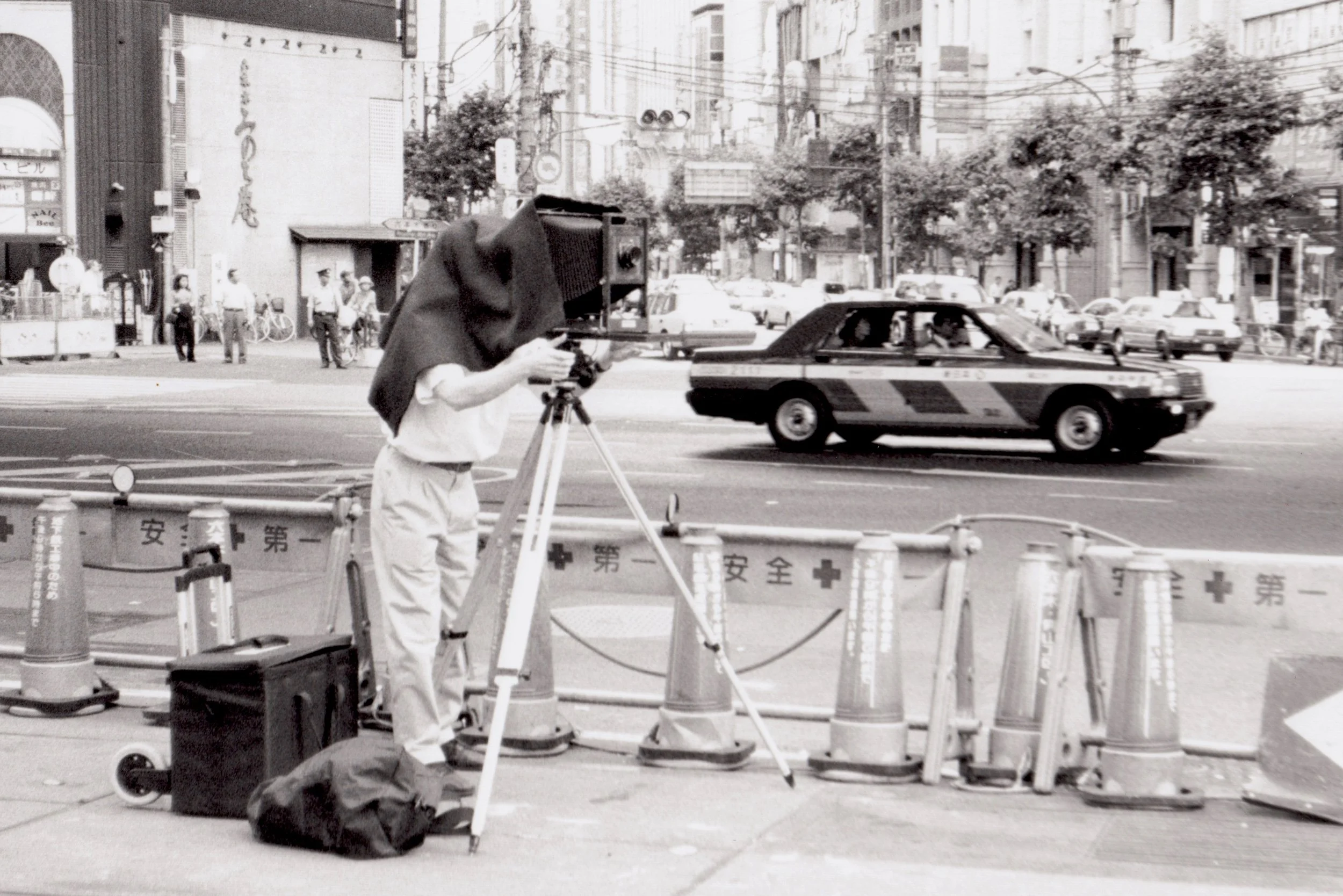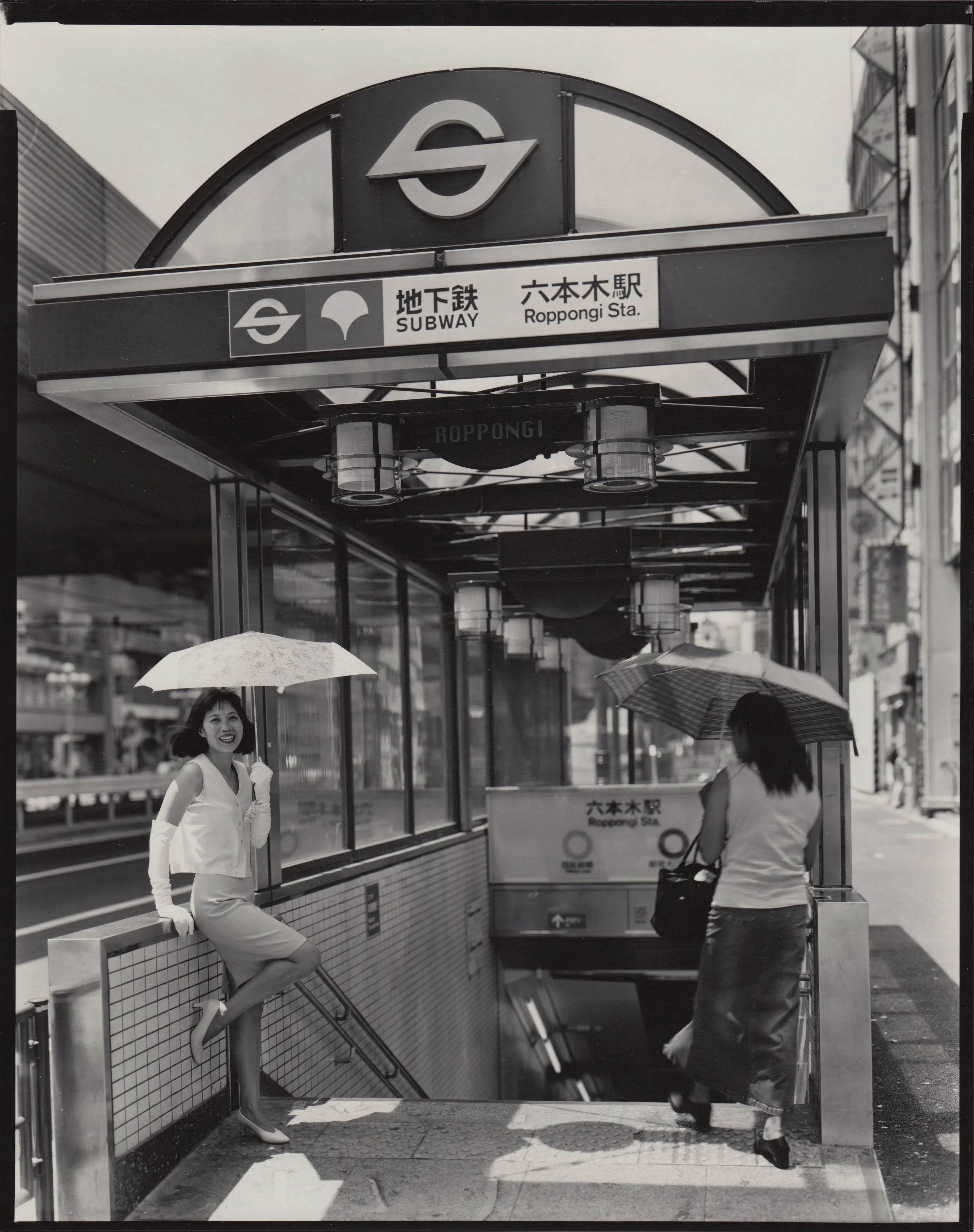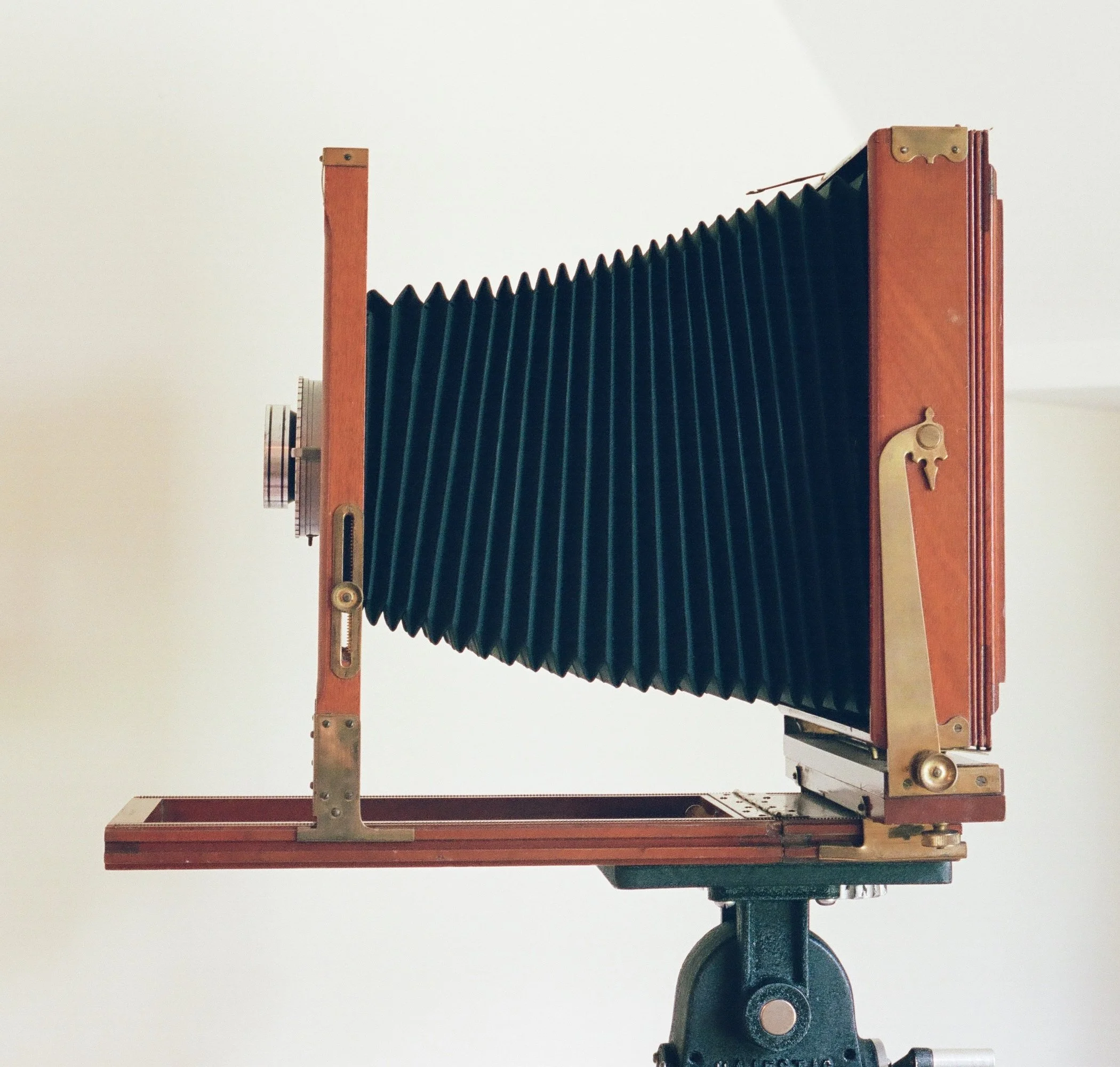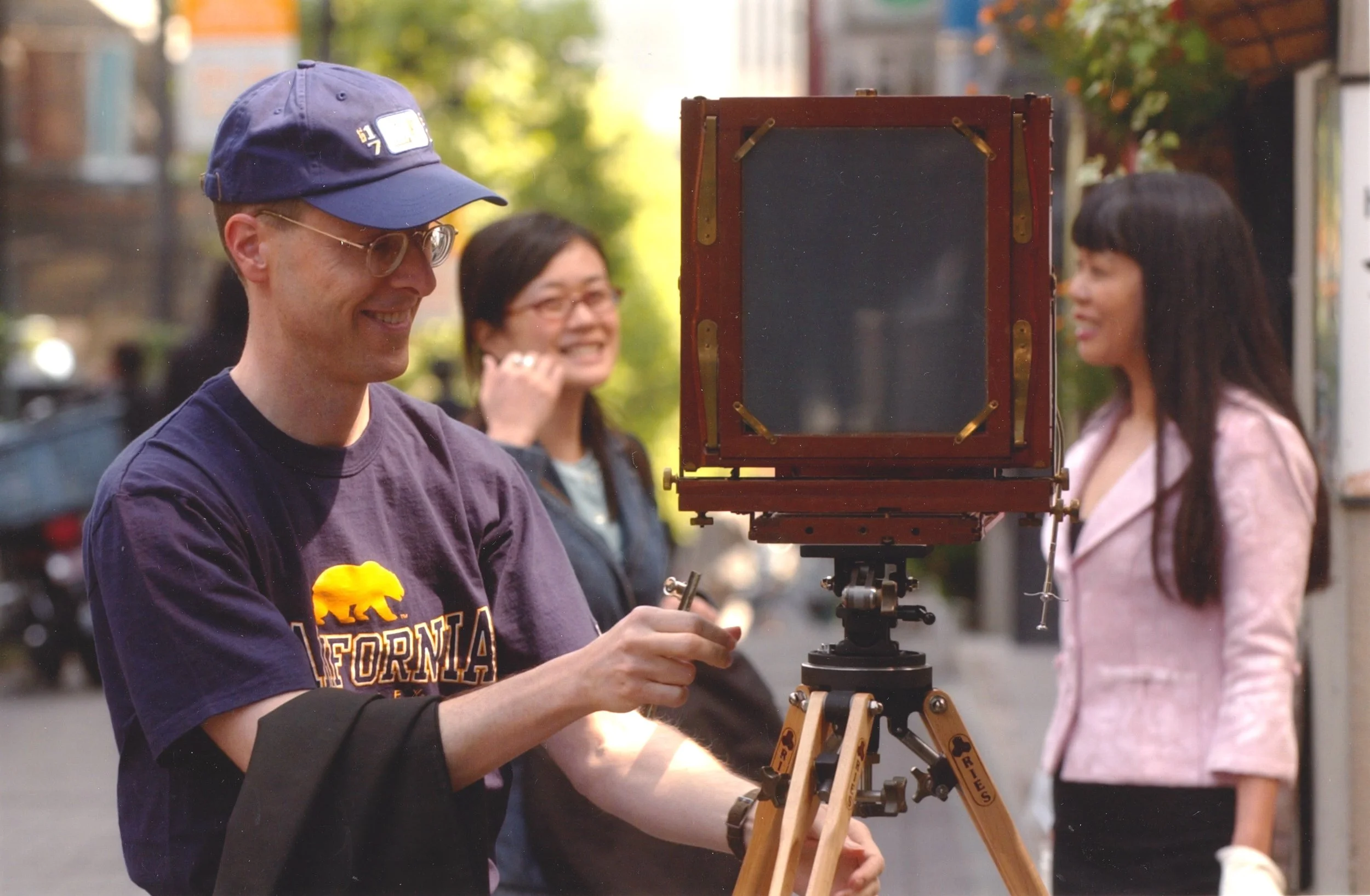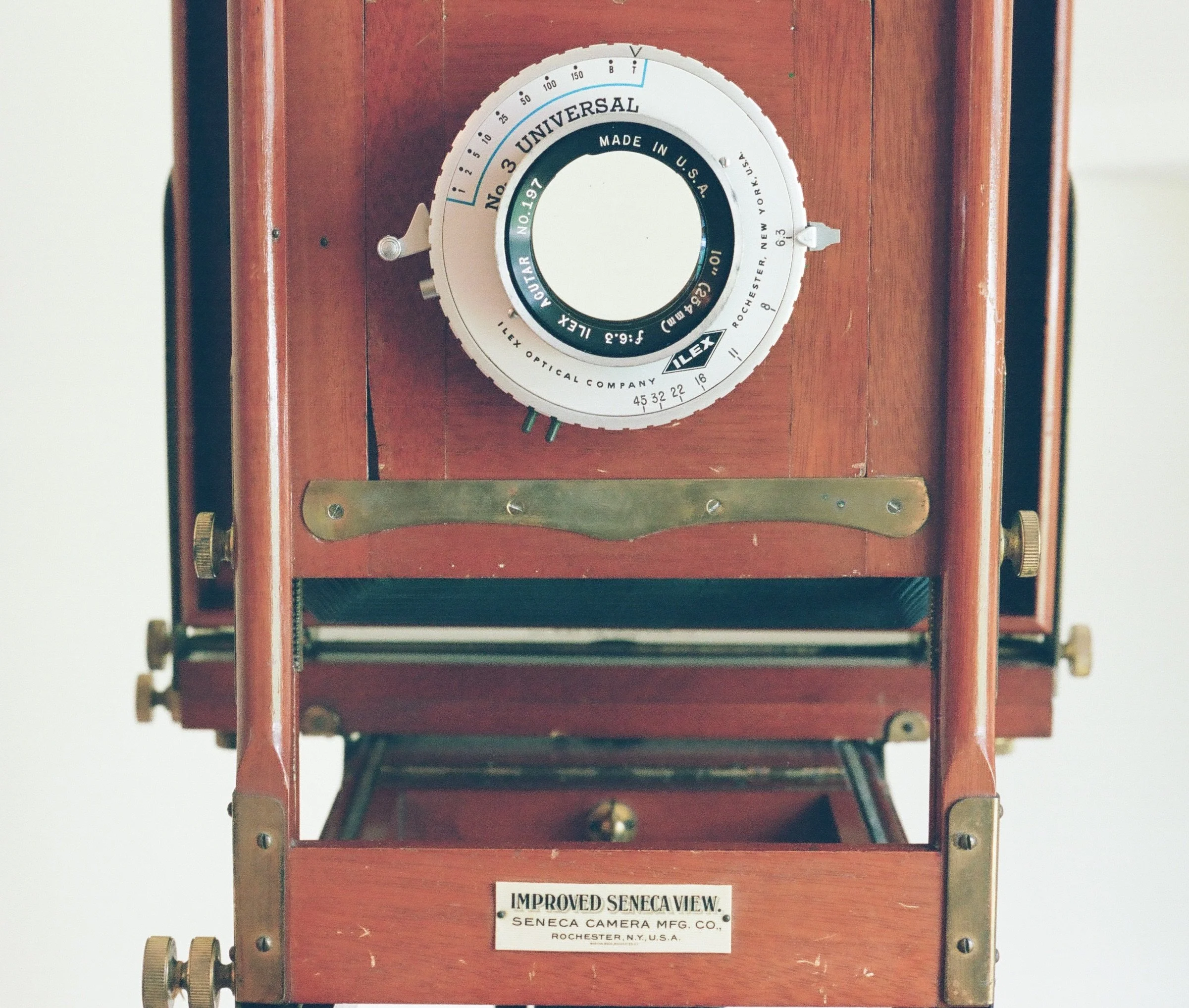8x10 Improved Seneca View
One of the lightest and most portable 8x10’s out there.
8x10 improved Seneca View with 10” f/6.3 Ilex Acutar lens. (Color photos of the camera were made with a Nikon F, 55mm f/3.5 Micro-Nikkor-P.C, and Portra 400.)
Street photography with an 8x10
Unlike most 8x10 cameras, this one can be used for street photography. Maybe not on every street. But it works on the streets of Tokyo.
Setting up at Roppongi Crossing, Tokyo. early 2000s. My assistant / model made this photo with her Yashica T4 point-and-shoot and Tri-X film. A few minutes later, and after a little repositioning, I made the photograph below:
Roppongi subway station entrance. 8x10 Improved Seneca View, 300mm f/8.5 Fujinon-C, FP4+, contact printed on Oriental Seagull Grade 2 fiber based paper, early 2000s.
Design
The Improved Seneca View is about 100 years old, and fully up-to-date because large format technology hasn’t changed. It’s a wooden flatbed and the advantage of this design is that ‘with the lens support retracted, the bed folds up to protect it, and the ensemble is quite compact for carrying or storage’ (Adams, 1980, 31-32).
Although compact, not all flatbeds are light but this one is. Weight was minimized by sacrificing some structural rigidity and some movement capability; that is, the ability to change the orientation of the lens plane and film plane is limited.
The camera originally had with an extension bed that slotted into the rear, but at some point (under previous ownership) it went missing. Still, there’s enough bellows extension for a normal focal length lens (10 or 12 inch).
8x10 improved Seneca View with 10” f/6.3 Ilex Acutar lens and Majestic tripod.
8x10 improved Seneca View
Setting up in Roppongi, Tokyo. 2004. Photo information not recorded. Below is one of the results from that day’s photo shoot.
Roppongi, Tokyo. 8x10 Improved Seneca View, 10-inch (254mm) f/6.3 Ilex Acutar, FP4+, contact printed on Oriental Seagull Grade 2 fiber based paper and slightly cropped, 2004.
It works best with small, light lenses
With this camera, I use a 300mm f/8.5 Fujinon-C and a 10-inch (254mm) f/6.3 Ilex Acutar. Both are light and compact. Heavy 8x10 lenses with larger maximum apertures work better with more stoutly constructed cameras such as a Burke & James or a monorail.
The complete outfit was made in Rochester, New York — camera, shutter, and lens.
Maintenance / repair
The only maintenance was a bellows replacement upon purchase in the late 1990s.
Summing up
In outdoor large format photography, light weight and compactness are important. Especially in an urban environment. That’s where this camera excels.
Roppongi, Tokyo. Roppongi, Tokyo. 8x10 Improved Seneca View, 10-inch (254mm) f/6.3 Ilex Acutar, FP4+, contact printed on Oriental Seagull Grade 2 fiber based paper, 2004.
References / further reading
Adams, Ansel. 1980. The Camera. Boston: Little, Brown.
Stroebel, L. 1993. View Camera Technique, 6th ed. Boston: Focal Press.
Weston, Edward (Nancy Newhall, ed.) 1990. The Daybooks of Edward Weston: Two Volumes in One. I. Mexico, II. California. New York: Aperture.
The dust jacket front cover photograph shows Weston with his 8x10 Korona View. On the back flap, it is incorrectly identified as a Seneca View. An indication of how similar the two are.

